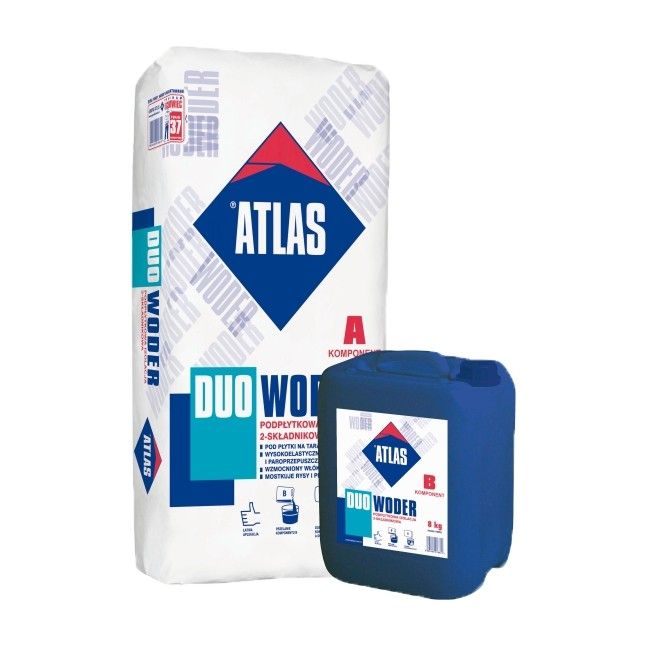What is the advantage of ATLAS Woder Duo waterproofing over similar products? Find out, what are the most important Woder Duo properties.
Contains polymer fibres
Polymer fibres in the waterproofing act like reinforcement in the concrete elements. They are usually the polypropylene thin threads with jagged surface (Photo 1).
Polypropylene fibres become very flexible when the temperature rises and are able to regain their previous state when the temperature drops, without any change of chemical properties.
Polypropylene is characterised by high resistance to acid, alkali and salt. Moreover, it is a material which is physiologically inert (in relation to human body) and therefore it is very often used to produce food packaging materials. Since polypropylene is water resistant, it retains all the properties even when brought into contact with food.
In addition, polymer fibres are very resistant to ageing. For this reason, polypropylene is not only used in chemical,
medical, car, food or textile industry, but also in construction.
Flexible
The presence of an appropriate content of polymer fibres significantly improves the performance of the waterproofing material – mostly its flexibility. This enables ATLAS waterproofing to be applied outdoors, especially on the terraces. Flexibility is a very desirable feature in case of sudden temperature change, e.g. the change of temperature over the terrace surface can reach up to 40-50˚C in just a few minutes during a storm on a hot day.
Cold rain drops falling on the terrace surface previously heated by the sun cause significant change of temperature.
Such large temperature gradient results in significant displacement in a short time. The temperature change affects the dimensions of ceramic cladding and screed. The waterproofing placed between the tiles and the screed must also change in terms of dimensions the way the other terrace elements change (Photo 2). Therefore, it is crucial to use properly flexible waterproofing which is able to transfer thermal load without any damage.
Joins scratches
Presence of polymer fibres in ATLAS Woder Duo composition increases its resistance to cracking and enables joining the scratches up to 1 mm wide. This feature allows to keep the continuity of waterproofing layer despite of the cracked substrate. Waterproofing material forms a “bridge” over a scratch, which effectively prevents from the damp penetration. To sum up, we are confident that despite any potential cracks in a stable substrate, which may arise after the waterproofing coating is applied, the waterproofing will fulfill its purpose and will protect from the moisture action.
Up to 40%
Such savings in relation to competitive products can be achieved by choosing ATLAS Woder Duo for waterproofing.
Does not require the reinforcing mesh embedding
Some manufacturers recommend using reinforcing mesh in areas which are slightly cracked or subject to particular loads. In case of using ATLAS Woder Duo, there is no need for embedding a fibreglass mesh in the waterproofing coat.
There are significant advantages resulting from not using the mesh. Naturally, waterproofing without a mesh is cheaper than the one with it. Therefore, both the investor and the contractor save money. Additionally, they gain extra time which otherwise would be spent for installing the mesh. To top it all, sometimes, especially in case of large surfaces, laying the mesh can be really tricky and time-consuming.
ATLAS WODER DUO is:

– flexible
– resistant to negative water pressure
– reinforced with polymer fibres
– joins scratches up to 1 mm
– does not cause flashing corrosion
Original text: Marcin Hankiewicz, ATLAS Group
English text: Piotr Marciniak, ATLAS Group










